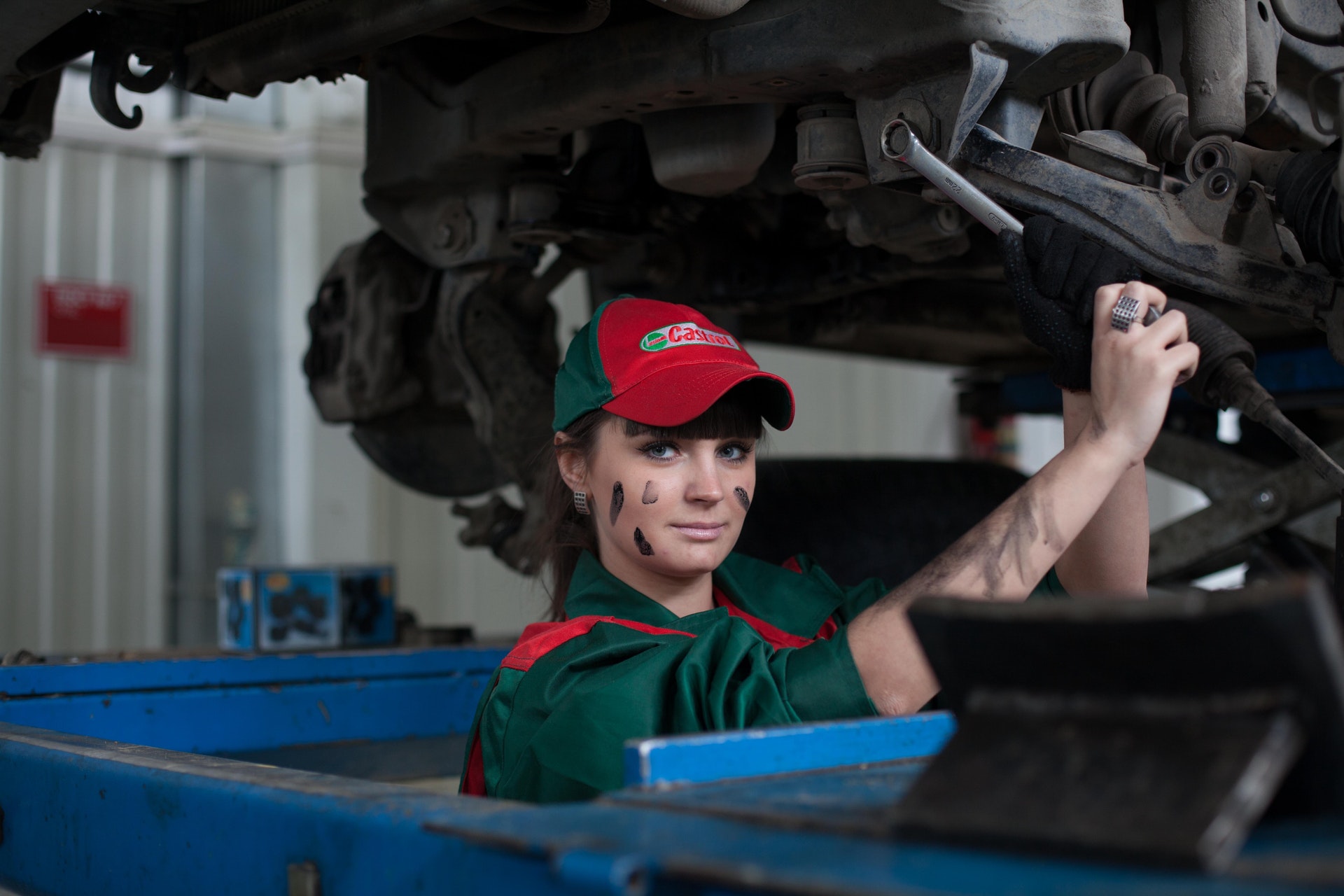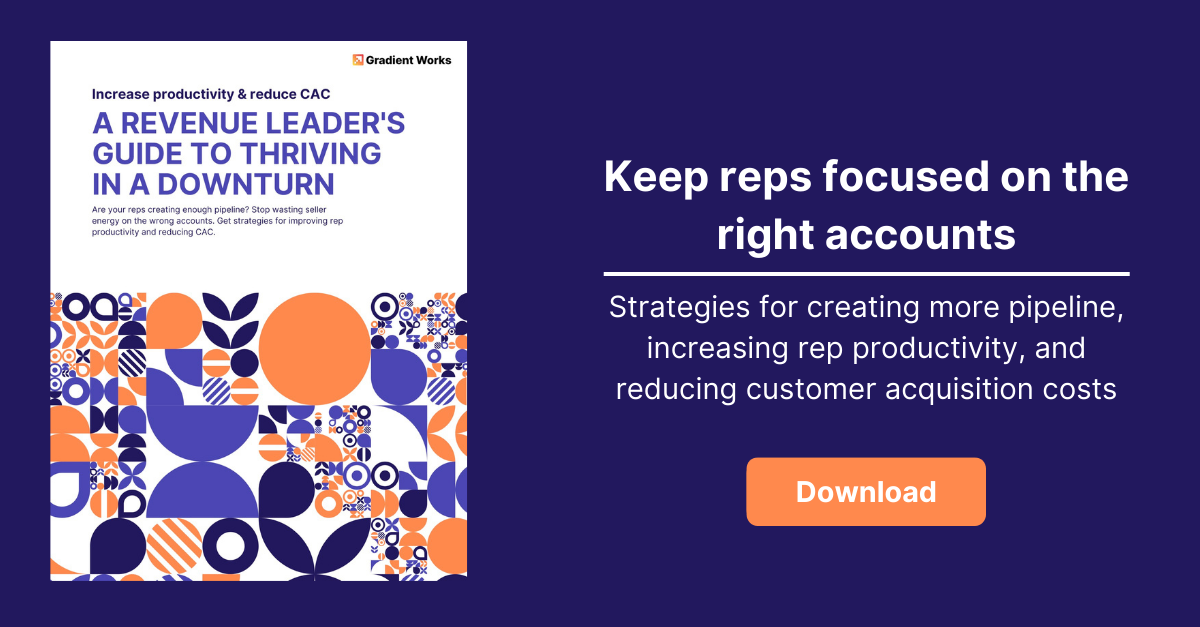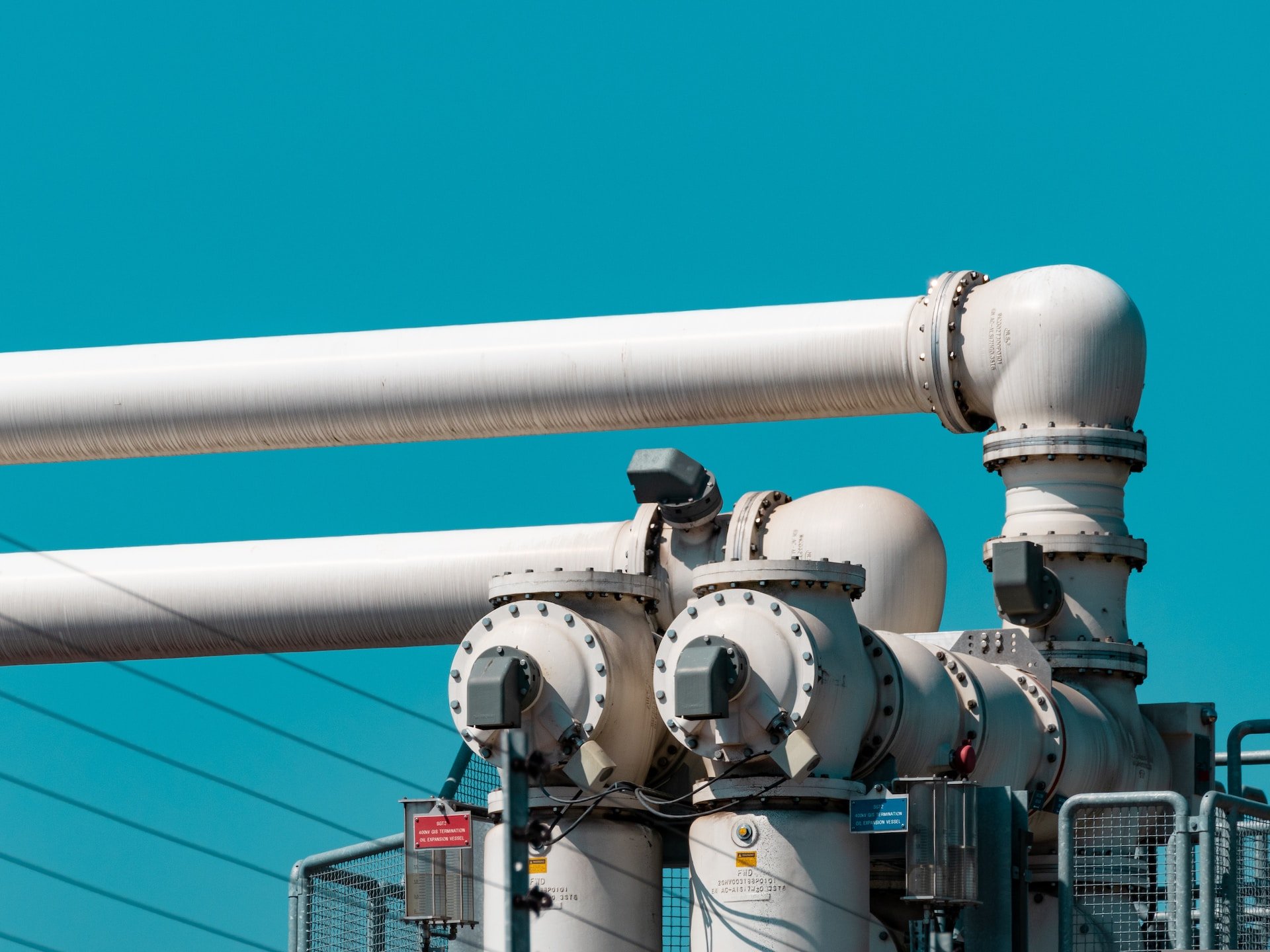Let's talk about revenue velocity. What does revenue velocity mean exactly? How do you calculate it? What's slowing down your revenue velocity? And how can you increase it? Read on, for we have a lot to discuss.
Calculating revenue velocity
Revenue velocity measures how quickly your business generates revenue. Velocity is more than just speed, however. It's a combination of the size of your pipeline, the effectiveness of your reps, and the time it takes to bring in and close new business. Here's a simple formula to calculate revenue velocity:
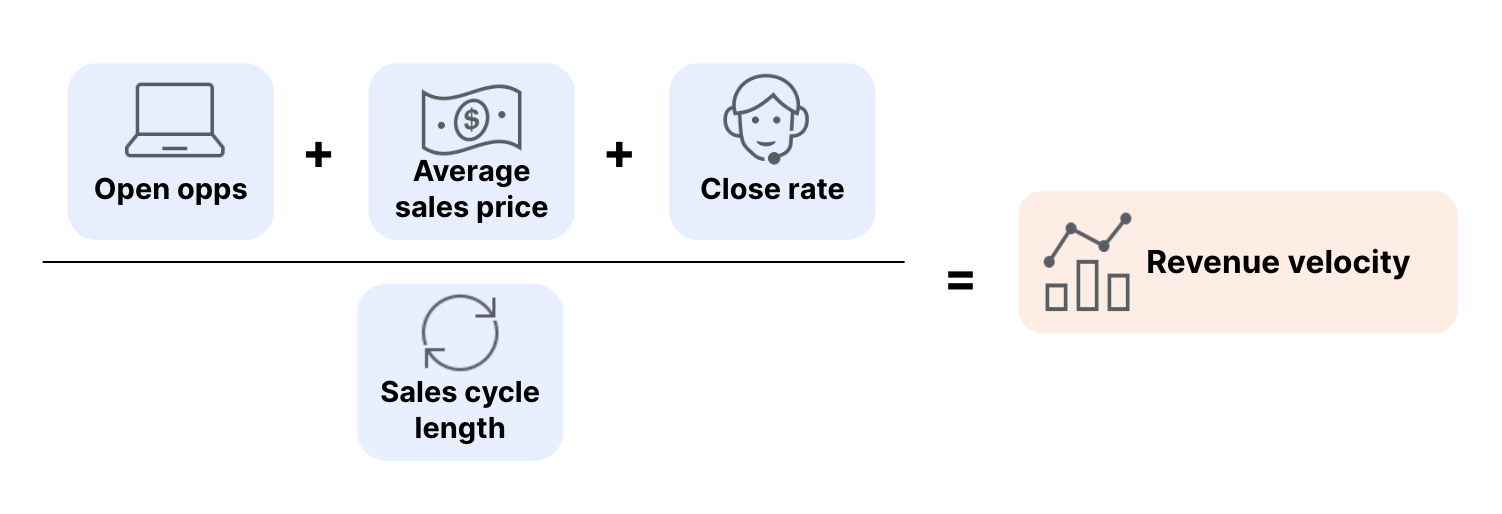
The factors that contribute to revenue velocity include:
- Number of open opportunities: How many open, qualified opportunities are in your sales pipeline at any given time?
- Average sales price: What’s the average sales price of a new deal?
- Close rate: What’s the conversion rate on closed-won deals?
- Sales cycle length: How long does it take the average deal to close?
Let's run through a quick example. Say your team has 50 open opportunities. Over the past 6 months, your average sales price has been $15,000. Your reps close 12% of their open opps. It takes 32 days on average to close a deal. That puts your revenue velocity at $2,812.50 per day. From there, you can compare that to your monthly or quarterly goals to see if you're on track, and what you need to do to hit your number.
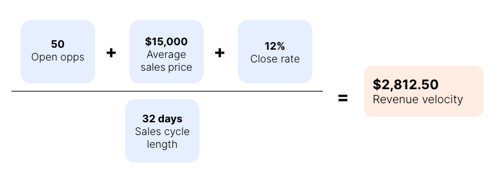
Want to calculate your own revenue velocity? Try our free revenue velocity calculator.
Increasing revenue velocity means optimization and removing bottlenecks
How do you increase revenue velocity? It's simple - just improve any of the above factors, without impacting the others negatively. Better yet, improve all of them. Easy, right?
Moving faster doesn’t just fix this. You have to move smarter. That will involve an increase in speed - a shorter time to close generally means faster time-to-value, less likelihood of a prospect going with a competitor, a sales rep can move on to the next deal, etc…
But it also involves optimization across your sales cycle. First, identify the areas that are most negatively impacting, or slowing down, revenue velocity - the bottlenecks in your sales cycle.
How can you identify those bottlenecks? Take a look at the factors that contribute to revenue and pipeline velocity - open opportunities, average sales price, close rate, and sales cycle length. Are any of those lower than you think they should be? Have they increased or declined over time? Is your sales cycle too long? Do you have enough open opportunities? Your gut probably knows where there's an issue, but you also likely have readily available data to demonstrate which ones are lower than they should be.
Once you identify a problem factor, then you can narrow it down to a more specific bottleneck preventing your team from being effective. Here are some examples.
|
Problem factors |
Possible bottlenecks |
|
Not enough open opportunities |
Poorly qualified inbounds, not enough inbounds, inefficient outbounding, slow response time, unclear rules of engagement |
|
Low average sales price |
Bad pricing/packaging fit, too many discounts, non-ICP customers, not enough product add-on or upsell opportunities |
|
Low close rate |
Poor rep/deal fit, poorly qualified opportunities, inadequate enablement, lack of early discovery, bad product/market fit |
|
Long sales cycle length |
Inefficient account assignment, slow or sloppy handoffs, inadequate enablement |
Fewer bottlenecks = higher velocity. Once you've identified one or more bottlenecks in your revenue engine - the areas that are slowing down your revenue velocity - you can work to improve those. Each individual process improvement will increase the velocity of your entire revenue system. Here are some examples of possible fixes for common revenue bottlenecks.
|
Improved factors |
Bottleneck fixes |
|
More open opportunities |
Better qualified inbounds, more efficient outbounding, better response time, clear rules of engagement |
|
Higher sales price |
Additional product add-ons, new pricing/packaging, smaller discounts, larger or better fit customers, ABM campaigns |
|
Increased close rate |
Better rep/deal fit, better qualified opportunities, more early discovery, stronger enablement |
|
Shorter sales cycle |
More efficient account assignment, optimized handoffs |
Optimization through automation
So you know what's slowing down your revenue engine, and you know what you need to change. How do you actually improve those things? Many bottlenecks can be improved through automation. Automation will increase efficiency and free up rep time for the higher-value parts of the sales process.
For example, automation can improve rep/deal fit, qualify opportunities better, provide more efficient account assignment and optimized handoffs, create a more efficient outbounding process, improve response time, and maintain clear rules of engagement.
Many of these come down to efficient rep assignment and rules of engagement. Matching prospects to sales reps, getting new leads in the hands of a rep as quickly as possible, smarter algorithmic qualification and discovery, ensuring smooth handoffs between reps - all of these relate to who owns an account when, the question at the core of most ROE.
Automation can manage assignment better than a person can. Using the data in your CRM, the right automation technology can instantly route a new lead to the right rep, based on historical data and simulations to predict likely outcomes. And it can do it fairly and consistently, reducing perceived unfairness in deal assignment.
You should look for opportunities to optimize assignments throughout the customer lifecycle.
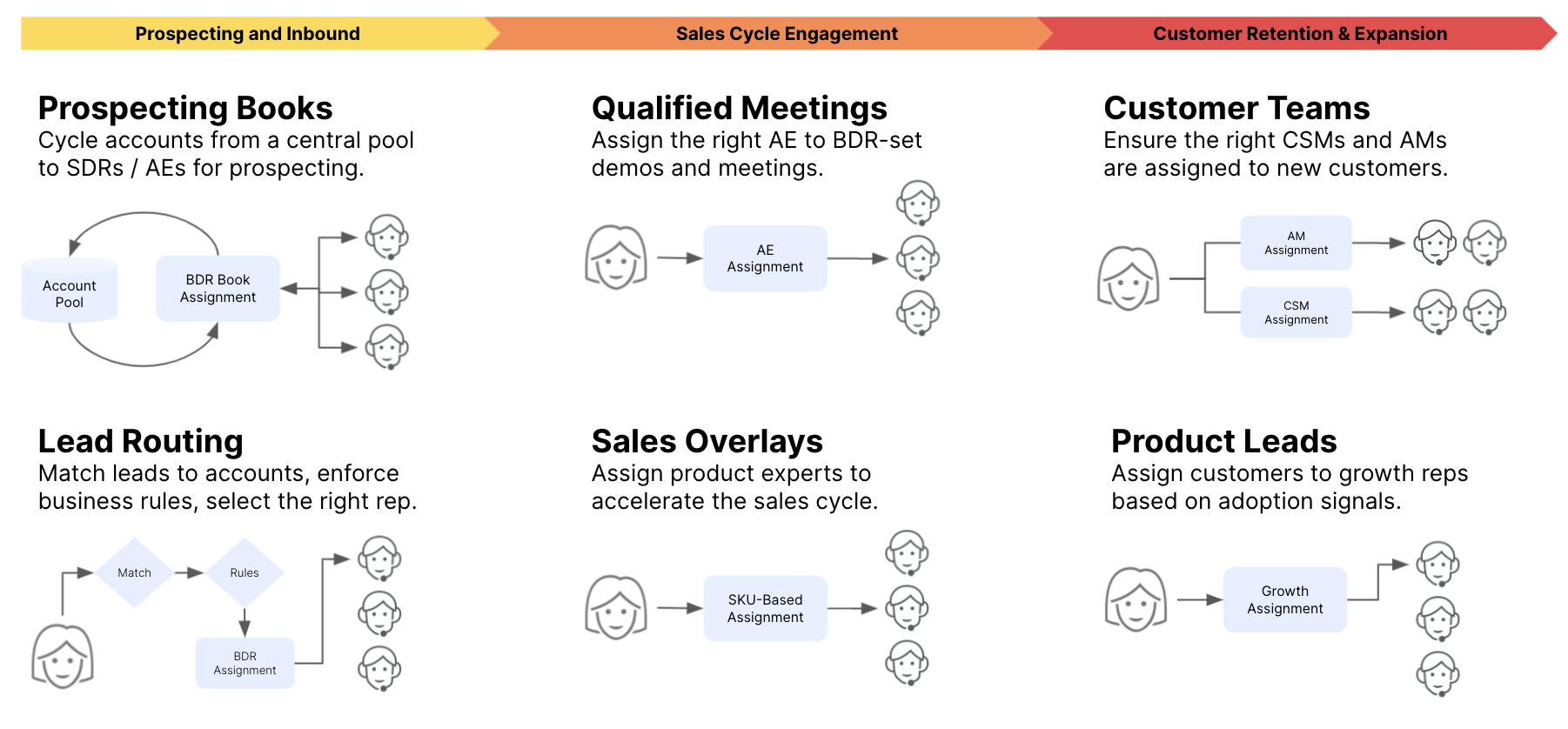
Your organization may already have some form of automated lead distribution in place already, helping to get inbound leads in the hands of an SDR as quickly as possible. But do you automate demo sets or qualified meeting bookings? How about new customers - how do you assign onboarding reps or CSMs and AMs to new customers? What about product-qualified leads - how are new PQLs distributed to reps?
The more manual your assignment processes are, the slower and less efficient they'll be. Manual processes can lead to rep conflict, feelings of unfairness, inefficient assignment, and so many more bottlenecks in your revenue engine, ultimately slowing down revenue velocity.
TL;DR and takeaways for every revenue team
Your company's revenue velocity is being slowed down by one or more velocity bottlenecks. Identifying and improving those bottlenecks through optimization and automation will increase your overall revenue velocity.
Common velocity bottlenecks
- Waiting for rep assignments lengthens sales cycle
- Long prospect wait times reduce conversion rates
- Manual assignments are slow and inflexible
- Frequent errors require ops teams intervention
- Some reps are overloaded while others starve, hurting pipeline
- ROE conflicts cause compensation issues and hurt rep trust
For the CRO
Your revenue organization is a system, and bottlenecks at any stage reduce revenue velocity. Those issues are compounded as you grow, and your revenue organization likely has multiple bottlenecks impacting efficiency. Intentional automation will improve overall system efficiency.
For sales
Time kills deals. Traditional round robins and manual opp assignments are inefficient and lead to ROE conflicts. It’s essential to get the right prospect in the hands of the right rep at the right time. Automating assignment will lead to greater efficiency.
For marketing
Qualifying and distributing inbound leads can be improved through smarter automation. Even if you’ve automated lead routing already, there are likely opportunities for improvement that will increase SAOs and closed-won revenue attributable to marketing. This will also increase overall revenue velocity for your company.
For operations
Automating assignments throughout the customer lifecycle will increase sales effectiveness and reduce errors, requiring less ops time in the future. You've likely worked to automate inbound lead distribution already, but there are a number of additional assignments further down the customer lifecycle that still need work. Implementing rules of engagement automation will increase revenue velocity while ensuring compliance and reducing conflict.
Try our free calculator to calculate your company's revenue velocity.

